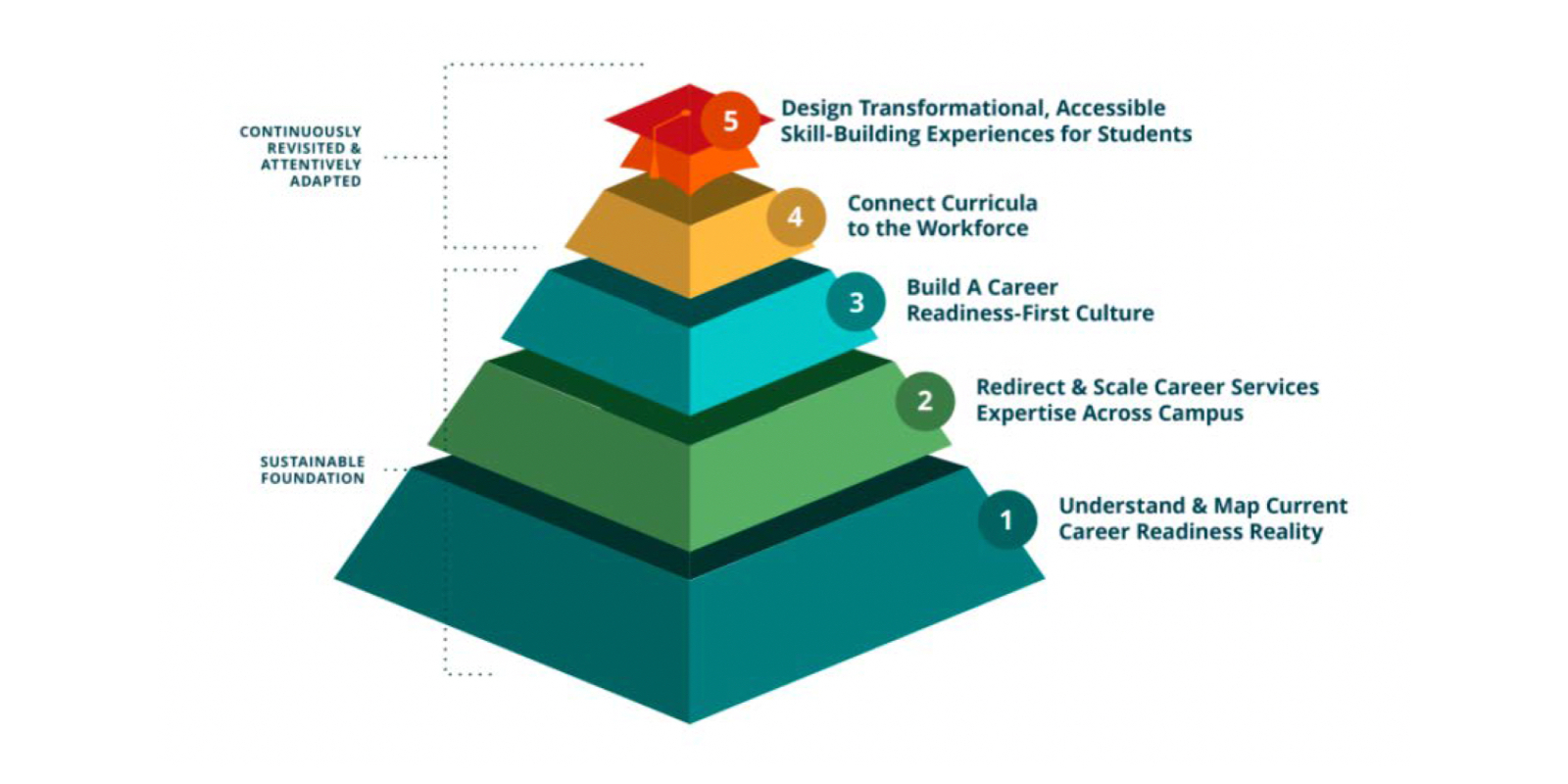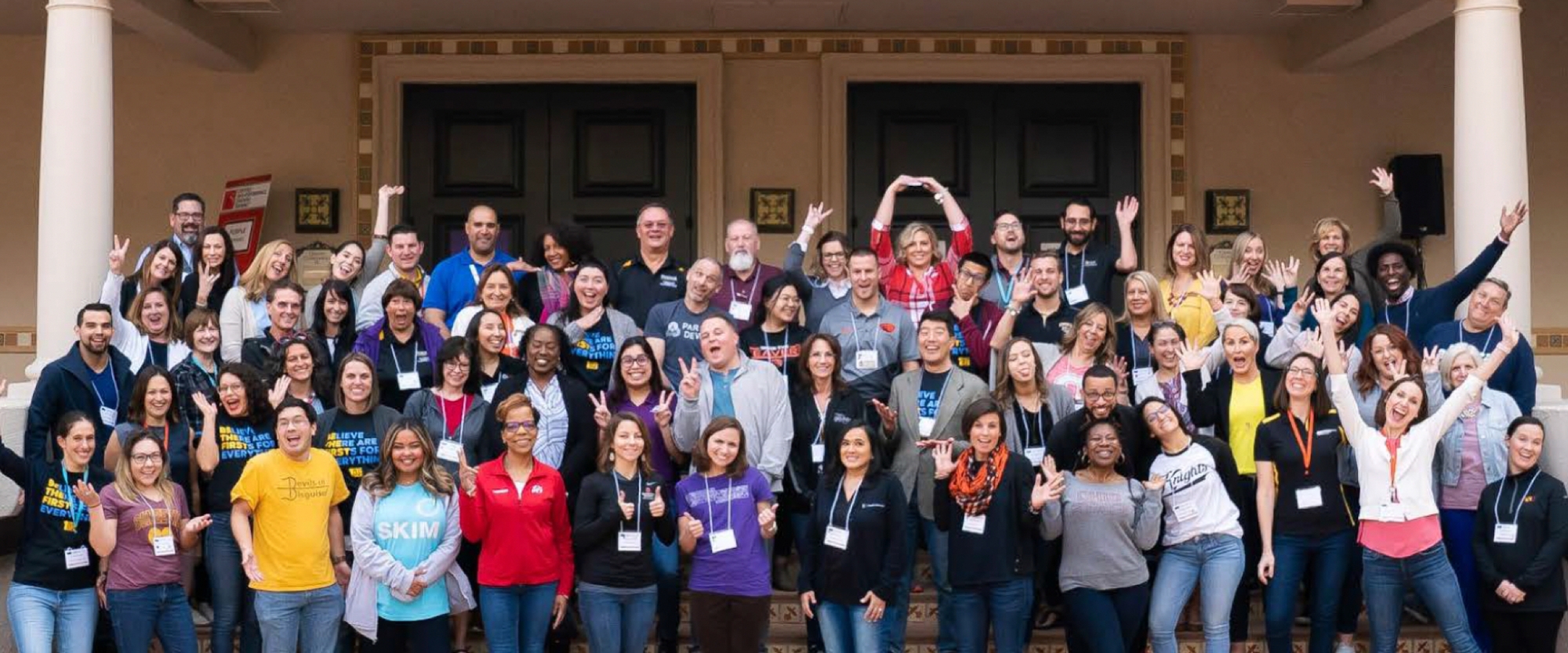Career preparation is a core objective of a university education. For many students, it's also the primary goal. According to Strada Education Network's Institute for the Future of Work, 85% of freshmen say that their main priority for attending college is getting a good job. Unfortunately, only 27% of college students report securing that good job before graduation, and 4 in 10 graduates are underemployed in their first job. Why are so many graduates leaving college without adequate career readiness? We've found a misaligned perception between how campus leadership and business leaders view student career outcomes.
Ensuring Equitable Access
Lack of adequate career preparation can be especially harmful to students from low-income backgrounds seeking to expand their career options and increase their lifelong earning potential through college education. Career services offices, like higher education more broadly, have struggled with access and opportunity issues for first-generation and low-income students. Many career services experts note that while some innovations and new practices are aimed at helping these students, there has been a dearth of attention and best practices for proactively reaching these students.
Providing equitably access to career opportunities requires a significant redesign of current campus systems, as well as new solutions to address the challenges facing today's students. Rather than putting the burden of career readiness on students, colleges must focus on supporting students through their college-to-career transition. This requires commitment from the university, robust partnership with employers, and input from students about what career preparation is most useful to them.
Between 2018 and 2020, seven University Innovation Alliance institutions utilized change management and human-centered design principles to identify and deconstruct barriers to successful career readiness for first-generation and low-income students. The Bridging the Gap from Education to Employment (BGEE) project, funded by Strada Education Network, aimed to improve career outcomes for the most vulnerable students by reimagining the college-to-career pathway. The project engaged teams on each campus in an intensive landscape analysis process, empathy work with student and employer stakeholders, and building and piloting innovative solutions.
Designing for Transformative Change
Creating meaningful, lasting change is complicated. To increase the odds that transformative changes to student career readiness would be adopted and produce desired outcomes, several popular methodologies were overlaid to create the Student Centered Collaborative Change (SC3) integrated framework to guide BGEE's work. This new UIA framework can be applied to any transformative change initiative and achieves collective impact by strategically blending methods of design thinking, change management principles, developmental evaluation, and effective collaboration.
Identifying Barriers to Equitable Career Readiness
BGEE campus team members spoke with more than 600 undergraduate students across seven institutions. Building empathy through informal conversations helped the team better understand student experiences and perceptions of their campus career services and the transition from education to the workforce. BGEE identified that, in order to equitably prepare first generation and low-income students for careers, career preparation must be (a) prioritized early and often, (b) accessible, and (c) integrated into the university experience. These key student needs catalyzed innovative career readiness solutions that were pilot tested on each campus.
Building Robust CampusEmployer Partnerships
BGEE aimed to leverage the expertise of university leaders and employers to ensure that stakeholders partnered meaningfully and effectively while reimagining the college-to-career pathway. To that end, a nationally representative and diverse Employer Working Group (EWG) was formed to provide insight into employer challenges and needs, collaborating with BGEE campus teams to build and test solutions. One result of this effort was the definition of robust campus-employer partnerships, co-created by BGEE campus teams, EWG members, and students.
The New Model for Equitable Career Readiness
To identify the most promising and effective solutions, campus teams identified key elements critical to the success of their innovative, piloted solutions. These key ingredients, combined with a robust evaluation process of pilot outcomes, culminated in recommendations for effective implementation. The New Model for Equitable Career Readiness is adaptable, scalable, and holistically integrates effective practices and solutions that, when layered upon one another, transform workforce preparedness from a responsibility that sits within one underfunded, understaffed campus unit to a cultural linchpin for successful student outcomes.
Effective practices and solutions were defined as innovations that (a) demonstrate potential to address barriers to first-generation and low-income students' career readiness, and (b) are adaptable across the UIA and beyond.
Prospective students are increasingly paying attention to graduate job placement rates before choosing which college to attend. We must see career readiness as equally important as graduation rates; in fact, increased student confidence could lead to improved retention and graduation rates.

- Understand and map the current career readiness reality: Institutions do not know how students experience career readiness on their campus because they lack access to student career outcomes or career-related activities data.
- Redirect and infuse career services expertise across campus: Career services professionals yearn for the end of transactional interactions with students, such as reviewing resumes for grammatical errors. They want to provide career readiness in deep, meaningful ways, especially to students who need it most. Their critical expertise has been siloed at the institution due to continuous underfunding and understaffing. They are a resource that must be recognized, leveraged, and scaled across the institution.
- Build a career readiness-first culture: If career readiness feels like "something extra" to a student, it feels like something "no one has time for" to faculty and staff. The expectation to serve students in this way doesn't yet exist. By demonstrating the importance of good career outcomes for institutional ROI, and communicating it as an expectation of service, career readiness becomes "how we do things around here".
- Connect curricula to the workforce: The most efficient and effective way to scale career readiness across campus is through the classroom – the one place where students are required to go. Rather than expecting every student to find their way to a career center, we must bring it to where they are, and partner with faculty and employers to do so. The first three levels of the model build the necessary foundation to earn faculty buy-in and support for this fourth level.
- Design transformational, accessible, skill-building experiences for students: Just as career readiness must be delivered in the classroom, skill-building experiences must be provided more intentionally, and at a larger scale. This level of the model is the pinnacle of an institution's successful career readiness and should be measured as the ultimate readiness goal for post-graduation employment. Once this fifth level is achieved, students will no longer feel as though being job-ready is "something extra," and will enter the workforce with confidence and competence upon graduation.
Positioning for Mutual Success
This new, innovative model, is the gold standard for any campus to graduate career-ready students, partner effectively with employers, and substantially increase the ROI of a degree from their institution. Universities that adapt to students' career readiness needs in this critical moment will be best positioned for future success. The New Model for Equitable Career Readiness is detailed further in the complete Bridging the Gap from Education to Employment: the UIA's Playbook for Transforming College-to-Career

